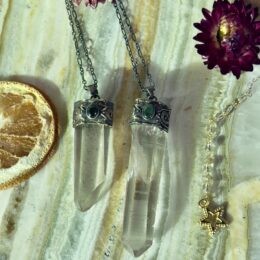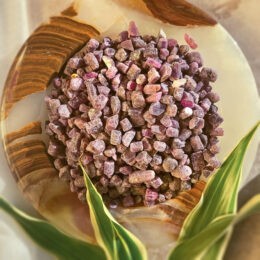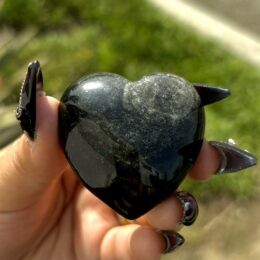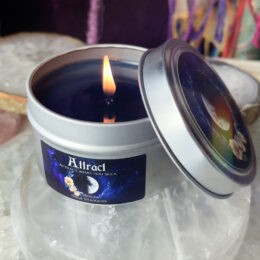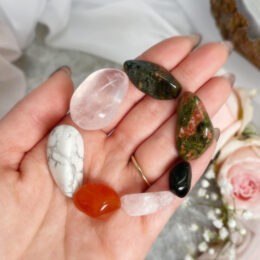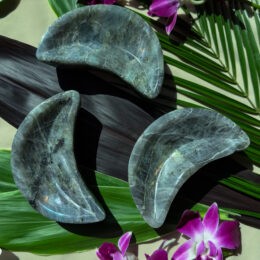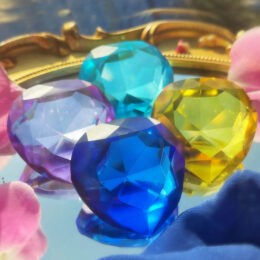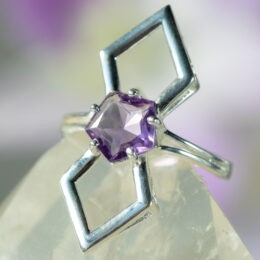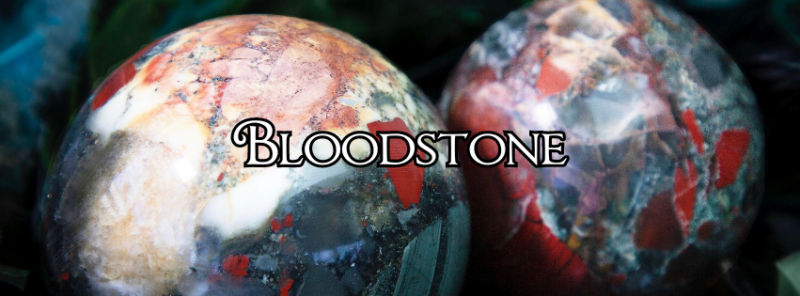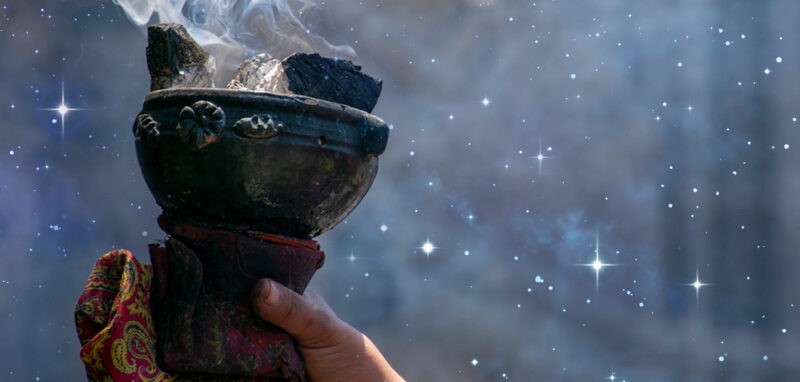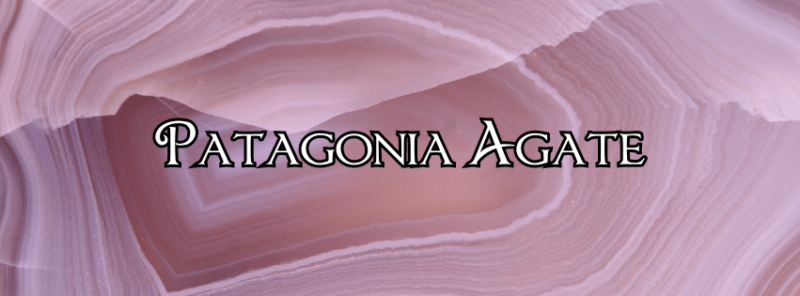Your cart is currently empty!
Labradorite Guide: Properties and Meaning

Labradorite Properties
Color: Green, blue, greyMohs Hardness: 6-6.5Chakra: Third EyeCrystal Structure:TriclinicLocation: Global
About Labradorite
Labradorite is a stunning gemstone often associated with new beginnings and the magic of the New Moon. This stone inspires hope, imagination, and ignites inner fire to help manifest desires. It also enhances visioning and awareness, sharpens focus, and opens the senses to new possibilities. Labradorite is commonly associated with the Third Eye chakra, located in the center of the forehead and responsible for intuition, perception, and spiritual insight. The colors of Labradorite can vary, but it is typically seen in shades of green, blue, and grey. This stone is a powerful tool for setting New Moon intentions and helps individuals tap into their inner wisdom and intuition.
The history of Labradorite
The history of Labradorite dates back to ancient times. It was first discovered in Labrador, Canada, hence its name. Indigenous peoples of the region believed that Labradorite was created when the Northern Lights got trapped in the rocks along the coast. They considered it a sacred stone with mystical properties. Labradorite was also highly valued by the Inuit people, who used it for protection and guidance during their spiritual practices. In the late 18th century, Labradorite gained popularity in Europe as a gemstone for jewelry. Today, it is cherished not only for its beauty but also for its metaphysical properties and its ability to connect individuals with their inner selves and the spiritual realm.
What are Labradorite healing properties?
Labradorite inspires hope, imagination, and ignites inner fire to help manifest desires. It also enhances visioning and awareness, sharpens focus, and opens the senses to new possibilities.
What are Labradorite Metaphysical / Spiritual Properties?
Labradorite is commonly associated with the Third Eye chakra, located in the center of the forehead and responsible for intuition, perception, and spiritual insight. This stone is a powerful tool for setting New Moon intentions and helps individuals tap into their inner wisdom and intuition.
What are the colors of Labradorite?
The colors of Labradorite can vary, but it is typically seen in shades of green, blue, and grey.
Labradorite FAQ
What is Labradorite used for?
Labradorite is used for various purposes such as jewelry making, decorative items, and spiritual practices. Its unique iridescent play of colors makes it a popular choice for gemstone enthusiasts and collectors. Labradorite also has metaphysical properties that enhance intuition, protect against negative energies, and promote spiritual growth.
What does Labradorite do?
Labradorite has a range of beneficial effects on the mind, body, and spirit. It stimulates the imagination and creativity, helping individuals tap into their inner potential. Labradorite provides protection against negative energies and promotes a sense of balance and harmony. Some people use Labradorite to enhance their psychic abilities and intuition.
Can Labradorite go in water?
Labradorite is generally safe to be submerged in water. However, it is recommended to avoid prolonged exposure to water or harsh chemicals, as it may affect the gemstone’s appearance or durability. It is always best to consult with a professional or refer to specific care instructions for Labradorite jewelry or decorative items.
How to cleanse Labradorite?
To cleanse Labradorite, you can use various methods such as smudging with sage or palo santo, placing it under running water, or burying it in the earth for a short period. Another popular method is to cleanse Labradorite using sound vibrations, such as ringing a bell or using a singing bowl. Whichever method you choose, it is important to set your intention and visualize the negative energies being released from the gemstone.
What does Labradorite do spiritually?
Spiritually, Labradorite enhances one’s connection to higher realms and spiritual energies. It is often used by individuals seeking to expand their consciousness, develop psychic abilities, or strengthen their intuition. Labradorite is also associated with the third eye chakra, which governs intuition, perception, and spiritual insight.
How to clean Labradorite?
To clean Labradorite, you can use a soft cloth or brush to gently wipe away any dirt or debris. Avoid using harsh chemicals or ultrasonic cleaners, as they may damage the gemstone’s surface or affect its iridescent play of colors. It is best to store Labradorite jewelry or decorative items in a soft pouch or separate compartment to prevent scratching or damage.
How to spot fake Labradorite?
To spot fake Labradorite, it is important to look for certain characteristics. Genuine Labradorite will display a distinct iridescent play of colors, known as labradorescence, when viewed from different angles. Fake Labradorite may lack this play of colors or have a dull appearance. Additionally, genuine Labradorite is a relatively hard gemstone, so if it easily scratches or chips, it may be an indication of a fake.
Is Labradorite toxic?
Labradorite is not known to be toxic. It is a naturally occurring mineral composed mainly of feldspar, which is generally safe to handle. However, it is always recommended to wash your hands after handling any gemstone or mineral, as they may contain trace elements or impurities that could potentially cause skin irritation or allergic reactions in some individuals.
Where is Labradorite found?
Labradorite is found in various locations around the world, including Canada (specifically Labrador), Finland, Madagascar, Russia, and the United States. Each location may produce Labradorite with slightly different characteristics, such as color variations or intensity of labradorescence.
How is Labradorite pronounced?
Labradorite is pronounced as “lab-ruh-daw-rite.” The emphasis is on the second syllable, “ruh.”
What chakra is associated with Labradorite?
Labradorite is primarily associated with the third eye chakra, also known as the sixth chakra. This chakra is located in the middle of the forehead, slightly above the space between the eyebrows. It governs intuition, perception, and spiritual insight. Working with Labradorite can help activate and balance the energy of the third eye chakra.
Can Labradorite be in the sun?
Labradorite can be exposed to sunlight, but it is generally recommended to avoid prolonged exposure. Direct sunlight may cause the gemstone’s colors to fade over time or affect its iridescent play of colors. It is best to store Labradorite jewelry or decorative items in a cool, dry place when not in use.
How to charge Labradorite?
To charge Labradorite, you can place it in direct moonlight overnight, preferably during the full moon. The moon’s energy cleanses and recharges gemstones, including Labradorite. You can also charge Labradorite by visualizing white or golden light surrounding the gemstone and infusing it with your intentions or affirmations.
What is the hardness of Labradorite?
Labradorite has a hardness of approximately 6 to 6.5 on the Mohs scale. This means it is relatively durable and can withstand everyday wear. However, it is still important to handle Labradorite with care to avoid scratching or chipping.


